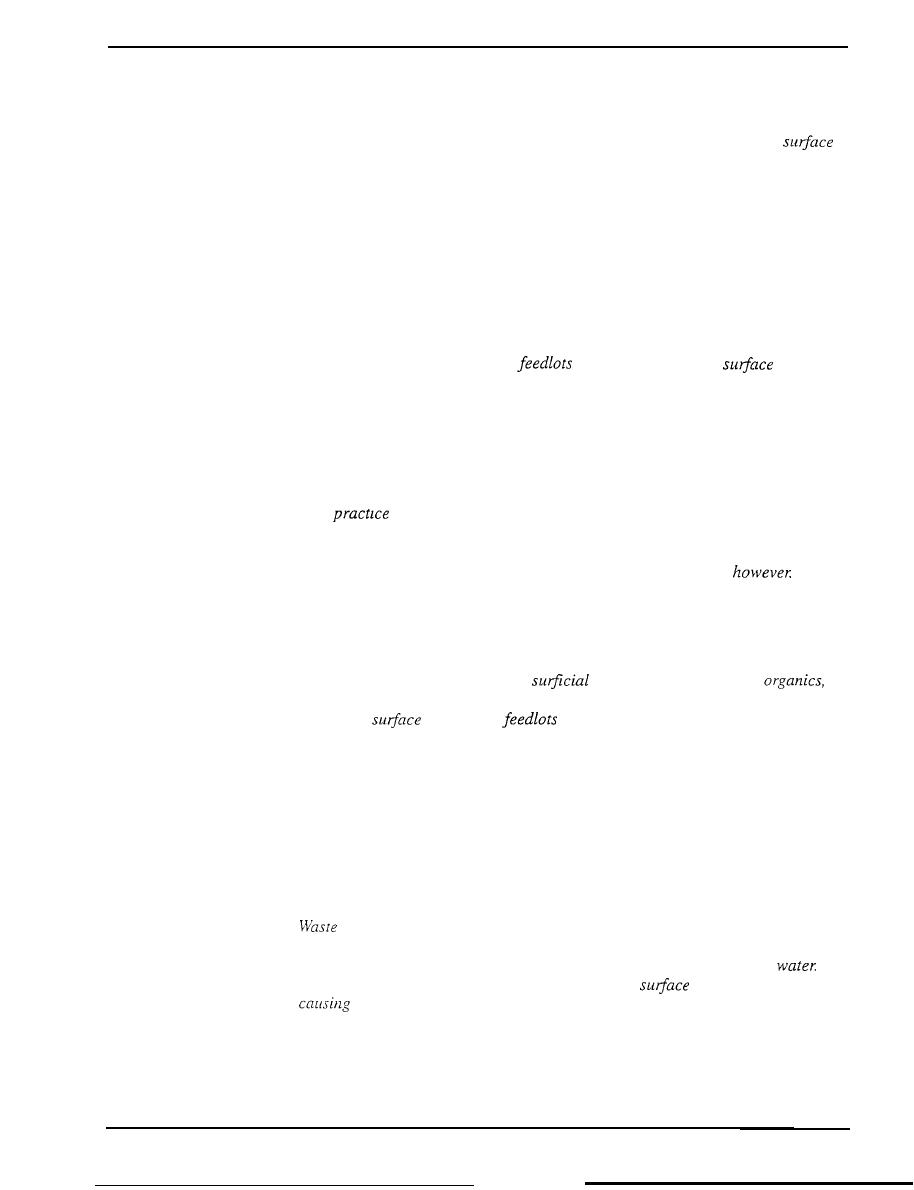
198 Chapter 10: Appendix
prevents losses of vegetation and undergrowth. This may maintain or increase
evapotranspiration. Increased permeability may reduce erosion and lower sedi-
ment and substance transportation to the surface waters. Shading along streams
and channels resulting from the application of this practice may reduce
water temperature.
Waste Management System (312): A planned system in which all necessary
components are installed for managing liquid and solid waste, including runoff
from concentrated waste areas, in a manner that does not degrade air, soil, or
water resources.
Waste Storage Pond (425): An impoundment made by excavation or earth fill
for temporary storage of animal or other agricultural wastes.
This practice reduces the direct delivery of polluted water; which is the runoff
and barnyards, to the
waters.
from manure stacking areas and
This practice may reduce the organic, pathogen, and nutrient loading to surface
waters. This practice may increase the dissolved pollutant loading to ground
water by leakage through the sidewalls and bottom.
Waste Storage Structure (313): A fabricated structure for temporary storage of
animal wastes or other organic agricultural wastes.
This
may reduce the nutrient, pathogen, and organic loading to the sur-
face waters. This is accomplished by intercepting and storing the polluted runoff
from manure stacking areas, barnyards and feedlots. This practice will not elimi-
nate the possibility of contaminating surface and ground water..
it
greatly reduces this possibility.
Waste Treatment Lagoon (359): An impoundment made by excavation or earth
fill for biological treatment of animal or other agricultural wastes.
This practice may reduce polluted
runoff and the loading of
pathogens, and nutrients into the surface waters. It decreases the nitrogen con-
tent of the
runofffrom
by denitrifcation. Runoff is retained long
enough that the solids and insoluble phosphorus settle and form a sludge in the
bottom of the lagoon. There may be some seepage through the sidewalls and the
bottom of the lagoon. Usually the long-term seepage rate is low enough, so that
the concentration of substances transported into the ground water does not reach
an unacceptable level.
Waste Utilization (633): Using agricultural wastes or other wastes on land in an
environmentally acceptable manner while maintaining or improving soil and
plant resources.
utilization helps reduce the transport of sediment and related pollutants to
the surface water: Proper site selection, timing of application and rate of appli-
cation may reduce the potential for degradation of surface and ground
This practice may increase microbial action in the
layers of the soil,
a reaction which assists in controlling pesticides and other pollutants by
keeping them in place in the field.
Chapter 10-198: 9197



 Previous Page
Previous Page
